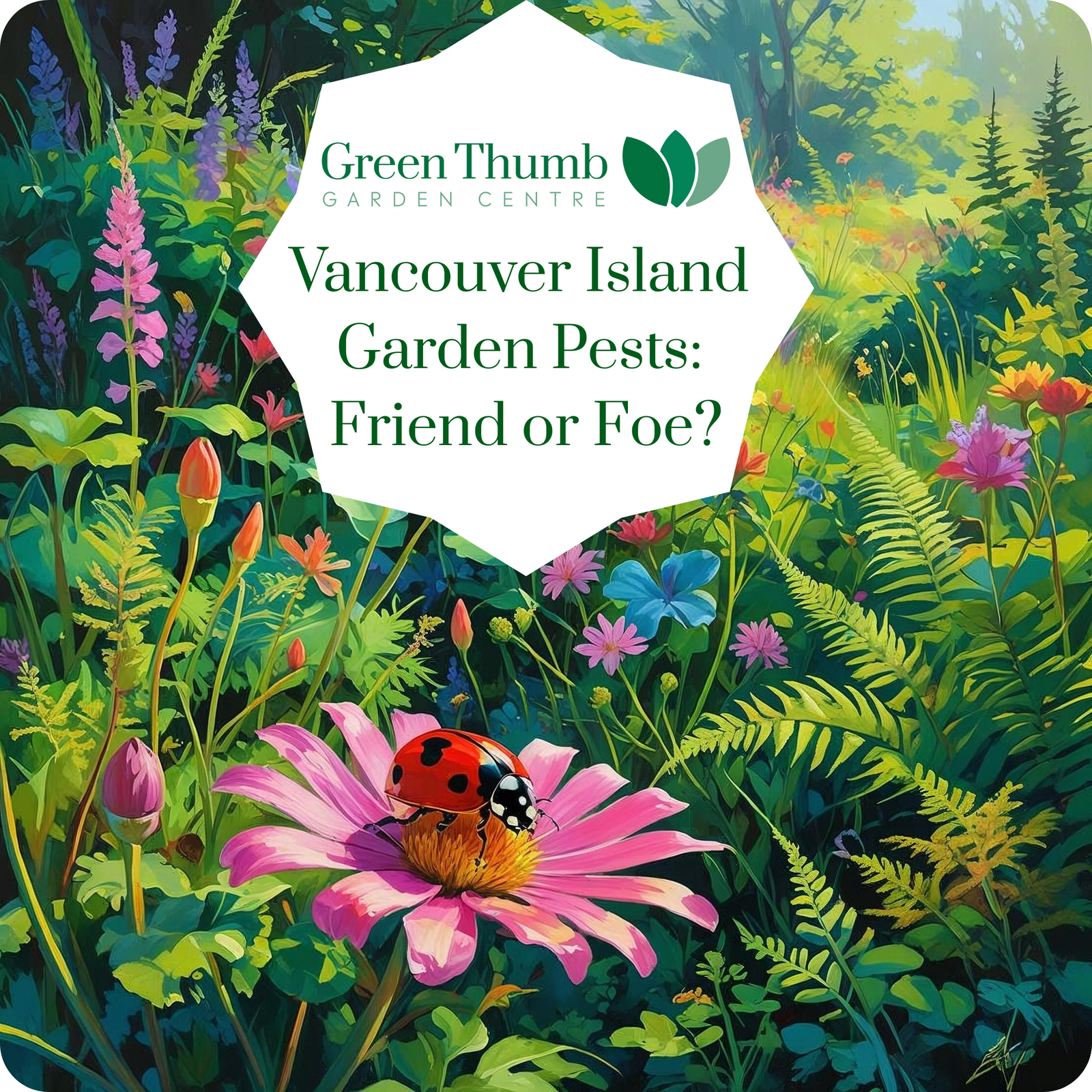Gardening on Vancouver Island offers a unique set of challenges and rewards, and understanding the cast of characters that inhabit your garden, both helpful and harmful, is key to success. Not all garden insects are pests, and some are even beneficial!
The Good Guys: Beneficial Insects
These are the unsung heroes of your garden, working tirelessly to keep pest populations in check. Encouraging them can significantly reduce your reliance on chemical interventions.
Predatory Insects
- Ladybugs (Coccinellidae): Both adult ladybugs and their larvae are voracious eaters of aphids, scale insects, and other soft-bodied pests. Their distinctive orange and black bodies are a welcome sight.
- Lacewings (Chrysopidae): Green lacewing larvae, often called "aphid lions," are highly effective predators of aphids, mites, and small caterpillars. Adult lacewings feed on nectar and pollen.
- Hoverflies (Syrphidae): While adults mimic bees and feed on pollen and nectar, their larvae are effective predators of aphids, thrips, and other small insects.
- Ground Beetles (Carabidae): These nocturnal predators feast on slugs, snails, cutworms, and other soil-dwelling pests. They hide under rocks and debris during the day.
- Spiders (Araneae): Most spiders are generalist predators, catching a wide variety of insects. While some people are wary of them, they are a vital part of the garden ecosystem.
The Bad Guys: Common Garden Pests
These are the insects and other creatures that can cause significant damage to your plants. Early identification and appropriate management are crucial.
Sap-Sucking Pests
- Aphids: Small, soft-bodied insects that cluster on new growth, sucking plant sap and causing stunted, distorted leaves. They can also transmit plant viruses.
- Whiteflies: Tiny, white, winged insects that congregate on the undersides of leaves, causing yellowing and weakening of plants. They fly up in a cloud when disturbed.
- Spider Mites: Extremely tiny arachnids that cause stippling (tiny dots) on leaves, often leading to yellowing and premature leaf drop. They thrive in hot, dry conditions and can create fine webbing on plants.
Chewing Pests
- Slugs and Snails: Common on Vancouver Island, these mollusks chew irregular holes in leaves, especially on young plants. They are most active in damp conditions and at night.
- Caterpillars: Larvae of moths and butterflies, many of which can cause extensive damage by chewing holes in leaves, fruits, and vegetables. Identification of the specific caterpillar is often key to management.
- Cutworms: Larvae of certain moths that live in the soil and cut down young plants at the soil line, usually at night.
- Earwigs: While they can be beneficial predators of some pests, they can also cause damage by chewing on tender plant parts, especially flowers and soft fruits.
Other Pests
- Root Weevils: Both adult weevils and their larvae (grubs) can cause significant damage. Adults notch leaves, while larvae feed on plant roots, often leading to plant decline or death.
- Wireworms: Larvae of click beetles, these shiny, hard-bodied worms feed on plant roots and seeds, often damaging potatoes and other root crops.
Integrated Pest Management (IPM) on Vancouver Island
Managing garden pests effectively on Vancouver Island often involves an Integrated Pest Management approach, which prioritizes environmentally sensitive methods.
-
Prevention: Healthy plants are more resilient. Choose appropriate plants for your climate, ensure good soil health, and provide adequate water and nutrients.
-
Monitoring: Regularly inspect your plants for signs of pests or disease. Early detection makes control easier.
-
Cultural Controls: Crop rotation to disrupt pest cycles, sanitation to remove diseased plants and debris, companion planting to deter pests or attract beneficial insects, and physical barriers, like row covers, to protect plants from flying insects.
-
Biological Controls: Encourage beneficial insects and other natural predators. Avoid broad-spectrum pesticides that can harm them.
-
Mechanical Controls: Hand-picking larger pests like slugs, snails, and caterpillars. Using traps for slugs or earwigs.
-
Chemical Controls (Last Resort): If necessary, use the least toxic pesticides available, targeting specific pests. Always follow label instructions carefully.
By understanding the good and bad insects in your Vancouver Island garden, you can create a thriving ecosystem that works for you, rather than against you.
Do you have more questions? We can help you, so give us a call, email or come visit us in store. We are open 7 days a week!


